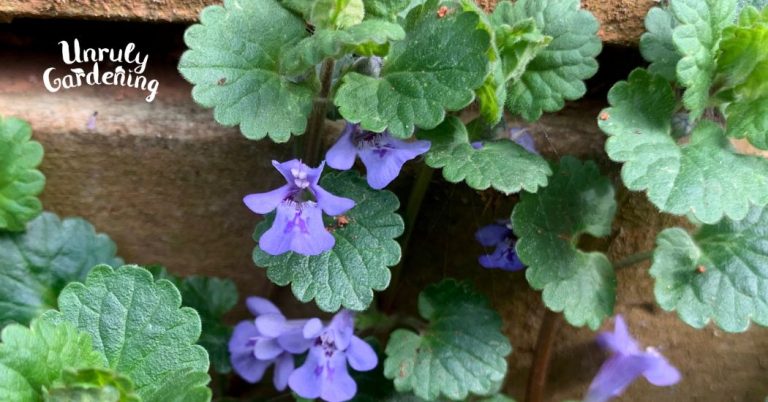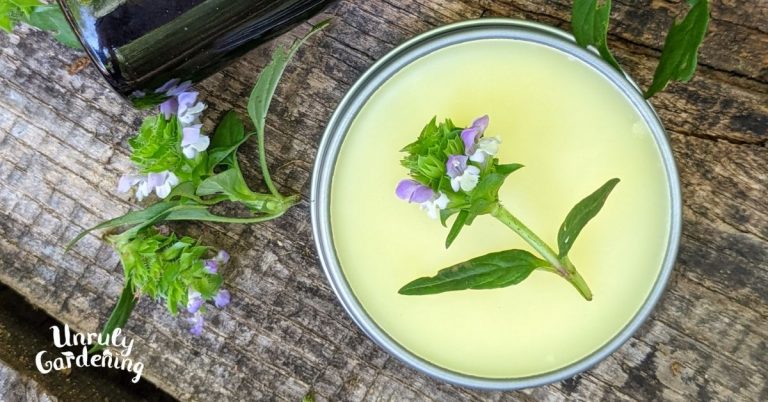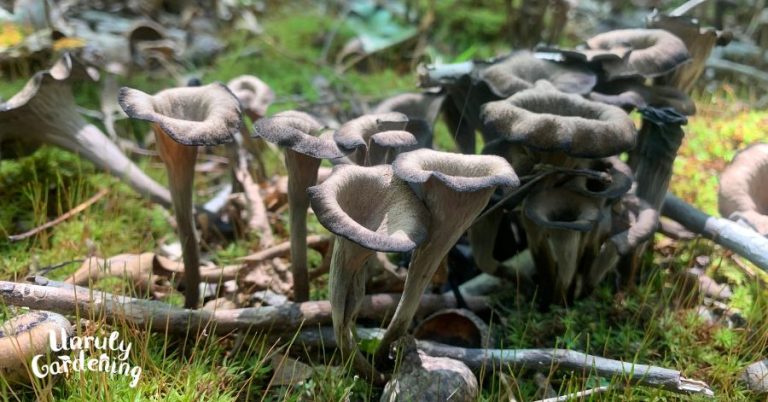Foraging & Using Reishi Mushrooms
Learn how to identify and harvest reishi mushrooms, plus how to dry and use for tea and tincture. Reishi’s distinctive look makes them friendly for the beginner mushroom hunter!
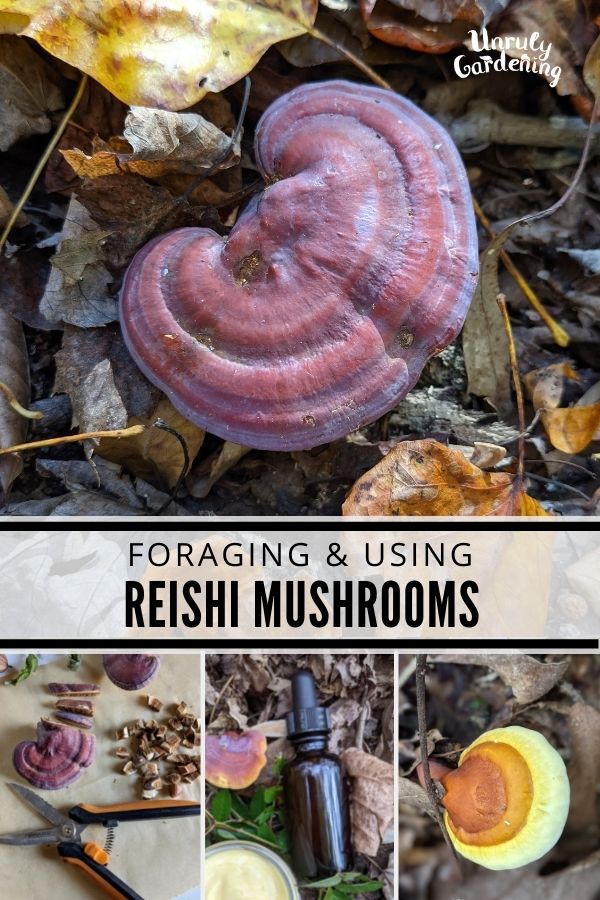
There are multiple species of reishi worldwide – all are thought to have some forms of medicinal properties and none have poisonous lookalikes.
Here at our place in the southeast US, we mainly find Ganoderma curtisii (“yellow reishi”) growing naturally on dead hardwood trees such as oak and beech, so that’s what you’ll see pictured in the accompanying photos. Not all reishi grow on hardwood though, Ganoderma tsugae (“hemlock reishi”) is found on hemlock and grows more to the north of our area.
The most well studied species is Ganoderma lucidum sensu lato. For more information on easily growing it at home, check out our article:
How to Identify Reishi Mushroom
Reishi is a polypore fungus – that means that it doesn’t have gills underneath, but instead has little pores that look like tiny pin dots on the underside of the cap. Young reishi have a white underside, and as they get older they can turn yellow, tan, or rusty colored.


The caps are kidney shaped (except in the special case of antler reishi) and most have a varnished waxy shiny surface that fades as the mushroom ages. They grow on dead or decaying stumps or standing trees. We’ve even had some pop up on the stump of an old Bradford pear in our front yard!

Reishi may also pop up several feet away from a stump or standing dead tree, but in spite of appearances they’re not growing from the dirt – in that case, they’re growing from the dead roots underneath the ground. Reishi will always be growing on wood.
Here’s a photo below of how far out some of the mushrooms can grow. The tree has been dead for several years, but still standing. The trunk has reliably produced gorgeous lion’s mane mushroom specimens for a few years, and the roots produce reishi.

The color bands on the cap can vary from shades of white, yellow, orange, and red, and in the case of our local reishi – we also find shades of purple on the more mature specimens found.


Some links on this site are affiliate links. We may earn a commission for purchases made.
Harvesting Reishi Mushrooms
Once you believe you’ve found a reishi, check your findings with other sources. (Always double and triple check your foraged findings!)
One of our favorite reference books:
- Mushrooms of the Southeast by Todd F. Elliott & Steven L. Stephenson
Also the videos by Learn Your Land are helpful:
- Harvesting Wild Reishi Mushrooms (Ganoderma tsugae, or hemlock reishi)
- Meet the Medicinal Yellow Reishi Mushroom (Ganoderma curtisii)
Some foragers prefer the younger specimens with a white underside, but feel free to collect more mature reishi. It’s fine if they’ve aged a little and released their spores, but we avoid gathering the really old and/or really bug-holed ones. A pair of Fiskars Multipurpose Garden Snips is helpful for harvest, and then later use to chop the mushroom into pieces for drying.
Reishi take quite some time to grow, so we never harvest a whole bunch at once. We just take the small amount that we need each year and leave the rest to continue their natural cycle in the forest. As a white rot fungus, reishi’s role in the forest is to break down the lignin in decaying trees.
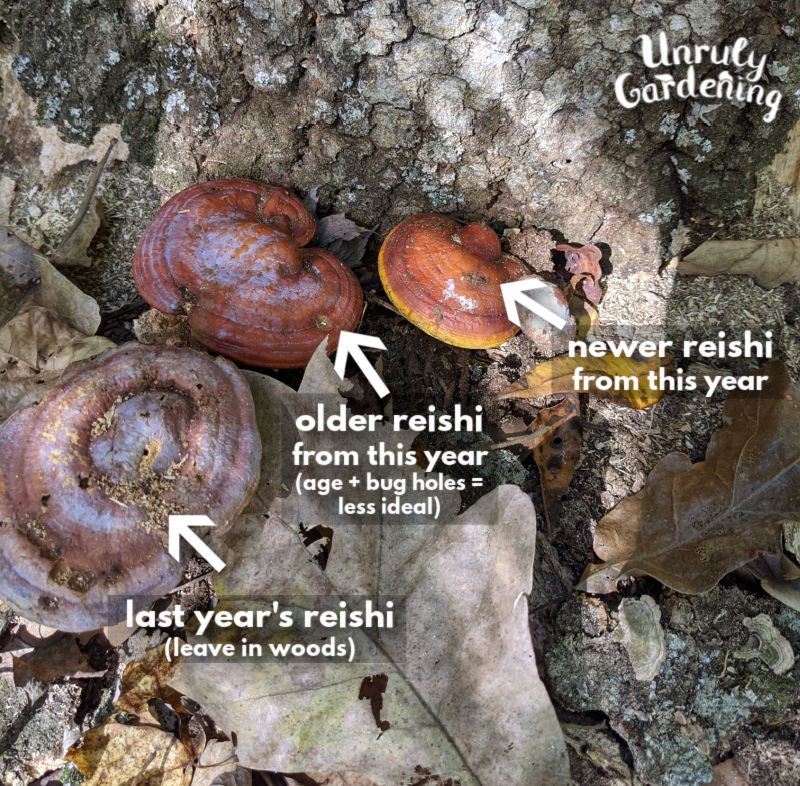
How to Store
While you could store freshly harvested reishi in a folded brown paper lunch bag in your refrigerator for a few days to a week if absolutely necessary, it’s best to process them right after harvest, whenever possible.
What about freezing reishi? Technically, you should be able to – a 2018 study in the International Journal of Medicinal Mushrooms indicates that freezing reishi even at ultra low temperatures (-120 degrees C) for three months didn’t damage its active components. Still, we find it much easier to dry reishi and store at room temperature, saving our freezer space for homegrown veggies, fruit, and pastured meats!

To dry reishi, first chop it up into small pieces. Don’t wait to chop up a whole mushroom after it’s fully dry because it will be a lot more difficult!
We use our trusty Fiskars Multipurpose Garden Snips for this step – first cutting the cap into long strips, then chopping those into smaller bits. Don’t wash or soak the mushroom in water. If you must wipe off a spot, do so with a damp paper towel. It helps to be very selective in the field as you harvest – brush off and leave any dirt behind and only pick the best specimens without bug holes.
Place the chopped pieces in a dehydrator, set to 110 degrees F (43.3 C). Reishi dries fairly quickly. Start checking after around 3 hours, and dry longer as needed.
If you don’t have a dehydrator, try placing the pieces in a single layer on a baking sheet, then oven drying at 170 degrees F (76.7 C) for 30 to 45 minutes, then checking and flipping the pieces, then drying for another 30 minutes to hour, or until completely dry. Check frequently when drying this way.
Store dried reishi in a glass jar (adding a desiccant pack is a good idea) in a cool dry spot, out of direct sunlight.

Medicinal Properties & Using Reishi Mushrooms
Reishi has been revered and used medicinally for thousands of years by traditional healers. Hot water will extract reishi’s beneficial polysaccharides, while alcohol extracts compounds such as polyphenols. Modern studies support its use in fighting Alzheimer’s and cancer, wound healing, and boosting the immune system.
Reishi tincture and tea are often taken in the afternoon and evening, because it helps to calm the overall nervous system, leading to a better sleep for some.
If you’re unable to forage enough mushrooms for your needs, you can buy high quality mushrooms (and ready-made extracts) from Mountain Rose Herbs:
How to Make Reishi Tea
Reishi tea can be quite strong on its own. We like to mix it into almond milk and sweeten with honey. You could also add it to your favorite tea blend, or even try some in your coffee!
To make tea, place 1 tbsp ground reishi into a small saucepan. (If your reishi is in larger pieces, just run it through a coffee grinder first to make a coarse yet fluffy powder.) Cover with 1 cup of water and bring to a simmer. Cover and gently simmer for 1 to 2 hours. The long heating time (at a minimum of 30 minutes) is needed to best extract the health benefits. Strain.
Reishi tea can be stored in the refrigerator for 1 to 2 days, or you can freeze it in ice trays for longer term storage.
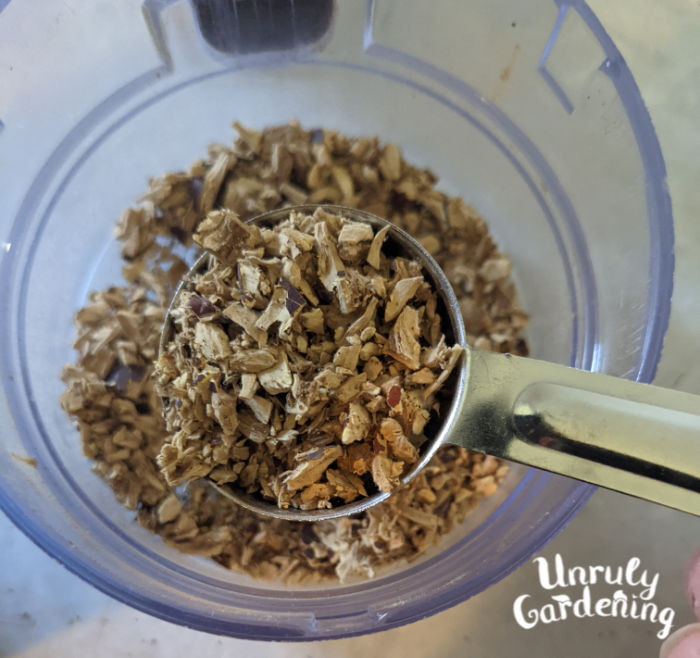
Reishi Tincture
Mushroom tinctures are made using the double (or triple) extraction method. This is to ensure you get the benefits that are both water soluble and alcohol soluble.
There are several different methods of making reishi mushroom tinctures – we follow the directions given by the Herbal Academy.
What if you can’t use alcohol, or are making tincture for a recovering alcoholic?
The book, Radical Mycology, mentions that you can use glycerin instead of alcohol, but to be aware that it won’t pull as many medicinal qualities from the mushroom and won’t be as strong.
You’ll need to experiment with the dose that works best for you, and consult with a qualified naturopath or other natural health care provider if you have any questions, but a general dose we follow for healthy adults is around 30 to 60 drops (1/4 to 1/2 tsp) taken once or twice per day.
Our articles are for information and idea-sharing only. While we aim for 100% accuracy, it is solely up to the reader to provide proper identification. Be sure to seek out local foraging classes and plant walks, and invest in mushroom and foraging guides suitable for the area you live in, since some wild foods are poisonous, or may have adverse effect.
References & Further Reading
Cheng, Poh-Guat, et al. Polysaccharides-Rich Extract of Ganoderma lucidum (M.A. Curtis:Fr.) P. Karst Accelerates Wound Healing in Streptozotocin-Induced Diabetic Rats. Evidence-Based Complementary and Alternative Medicine; Volume 2013 |Article ID 671252 | https://doi.org/10.1155/2013/671252.
Kurtipek, Gulcan Sylam, et al. Resolution of Cutaneous Sarcoidosis Following Topical Application of Ganoderma lucidum (Reishi Mushroom). Dermatology & Therapy, 2016 Mar; 6(1): 105–109.
Leonardi, Pamela, et al. Ultra-Low Freezing to Preserve the Lingzhi or Reishi Medicinal Mushroom Ganoderma lucidum (Agaricomycetes). International Journal of Medicinal Mushrooms. 2018;20(7):677-683. doi: 10.1615/IntJMedMushrooms.2018026535.
Lin, Zhi-Bin. Cellular and molecular mechanisms of immuno-modulation by Ganoderma lucidum. Journal of Pharmacological Sciences; 2005 Oct;99(2):144-53. doi: 10.1254/jphs.crj05008x.
Rahman, Mohammad Azizur, et al. Lingzhi or Reishi Medicinal Mushroom, Ganoderma lucidum (Agaricomycetes) Ameliorates Spatial Learning and Memory Deficits in Rats with Hypercholesterolemia and Alzheimer’s Disease. International Journal of Medicinal Mushrooms. 2020;22(1):93-103. doi: 10.1615/IntJMedMushrooms.2020033383.
Sohretoglu, Didem and Shile Huang. Ganoderma lucidum Polysaccharides as An Anti-cancer Agent. Anti-Cancer Agents in Medicinal Chemistry; 2018;18(5):667-674. doi: 10.2174/ 1871520617666171113121246.


